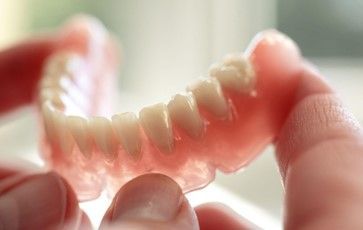


When you go for an annual cleaning at a dentist, the dentist will probably perform x-rays on your teeth. Typically, the x-rays can indicate whether you have any cavities that have formed and cannot be detected by the naked eye. While looking for cavities may be the main purpose of a dental x-ray, a dentist will analyze x-rays for other problems as well.
Check out some of the problems dentists will look for along with cavities and why x-rays should be a regular part of your dental routine.
1. Abscesses
If you suffer from a tooth abscess, then you likely have an infection in your gums or the root of the tooth. An abscess can cause extreme pain in the mouth and eventually lead to tooth loss if the abscess spreads. An x-ray can indicate the exact locations of a tooth abscess to help with treatment options.
In some cases, you could have multiple abscess spots in your mouth if the infection has spread. Typically, an abscess will not just appear unless you have some sort of tooth pain or discomfort. A dentist may order the x-rays during a wellness check-up to see indications of the infection.
A dentist may compare current x-rays to any x-rays you received previously to see the differences in your mouth and where abscesses present themselves.
2. Under Filling Tooth Decay
Under the bright lights of an oral exam, a dentist can typically see inside the mouth and point out any signs of tooth decay. If you've had fillings in the years past, then a dentist cannot see under the fillings if decay has occurred. In some cases, small gaps in fillings can create new cavities and signs of decay.
With dental x-rays, a dentist can complete a full scan of your mouth and pinpoint areas underneath fillings where you may have decay. Changes in your mouth or the natural wear of tooth fillings could lead to decay, and detailed x-rays will showcase the potential problem areas. A dentist will often take x-rays from multiple angles to capture different views of the teeth.
After the x-rays, a dentist may remove a filling and re-fill the cavity with a more secure filling to help protect your teeth. The general maintenance of your mouth can help prevent any pain and result in proper treatment.
3. Bone Loss & Changes
Dental issues like infection or gingivitis can expand to areas beyond just your teeth. As infections spread, they can impact your jaw bones and areas where the root of the teeth reach. Bone loss can cause changes in your mouth and result in a lot of pain. Bone loss can weaken your teeth, cause teeth to fall out, and result in the need for oral surgery.
If you have jaw pains, an x-ray offers the best look at the jaw. A dentist can analyze the jawbone to see clear signs of bone loss or potential bone loss. Digital x-rays give dentists the chance to zoom in on specific areas and see where bone loss has occurred. Your dentist will look at the root of the teeth for signs of infection.
You may need multiple treatments if any sign of bone loss has occurred. For example, you may need to get a root canal to stop the spread of an infection that has impacted the bones. You may need antibiotic treatment to help stop infections and bacteria growth in the mouth. The treatment depends on the exact situation and stage of bone loss you're currently experiencing.
For all of your dental x-ray needs, contact us at Advanced Dental Care. Our professional team can provide you with full mouth x-rays, analysis, and treatments. We can restore your smile and reduce any pain you have.













